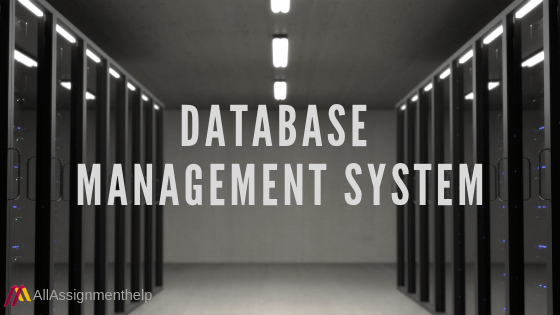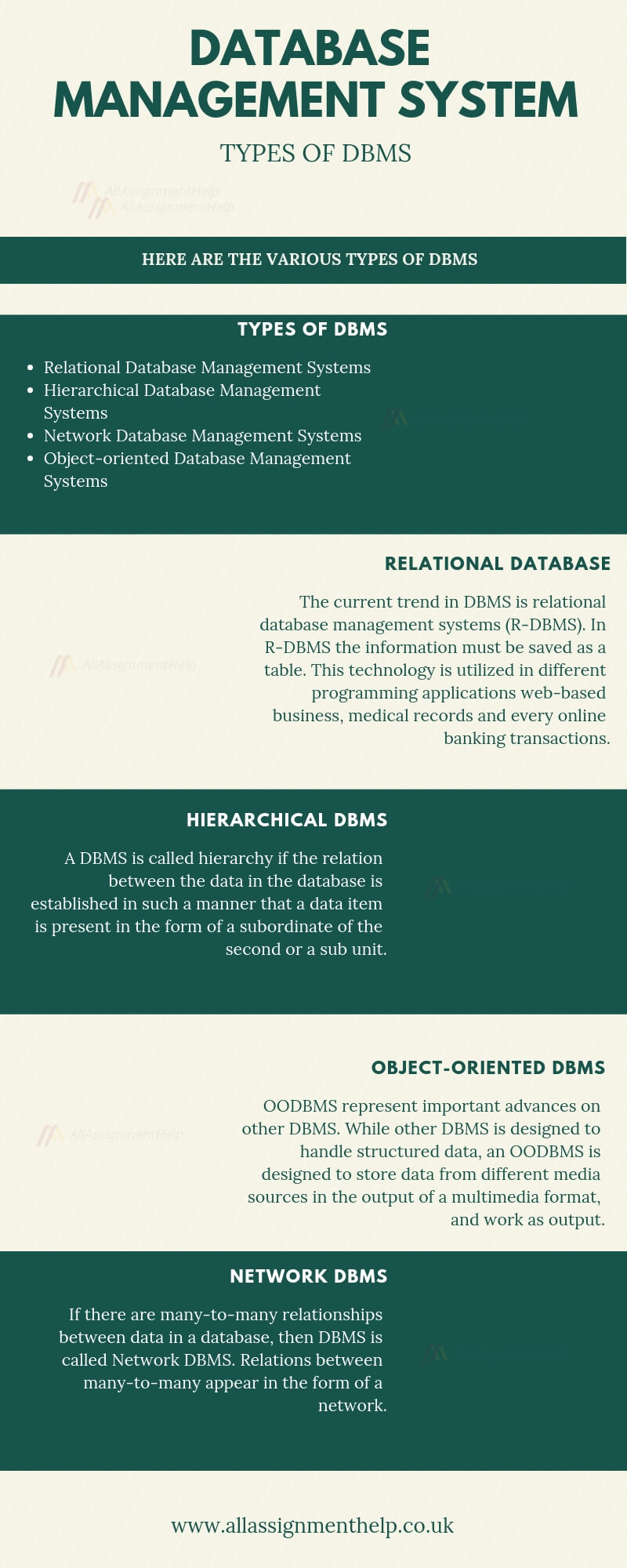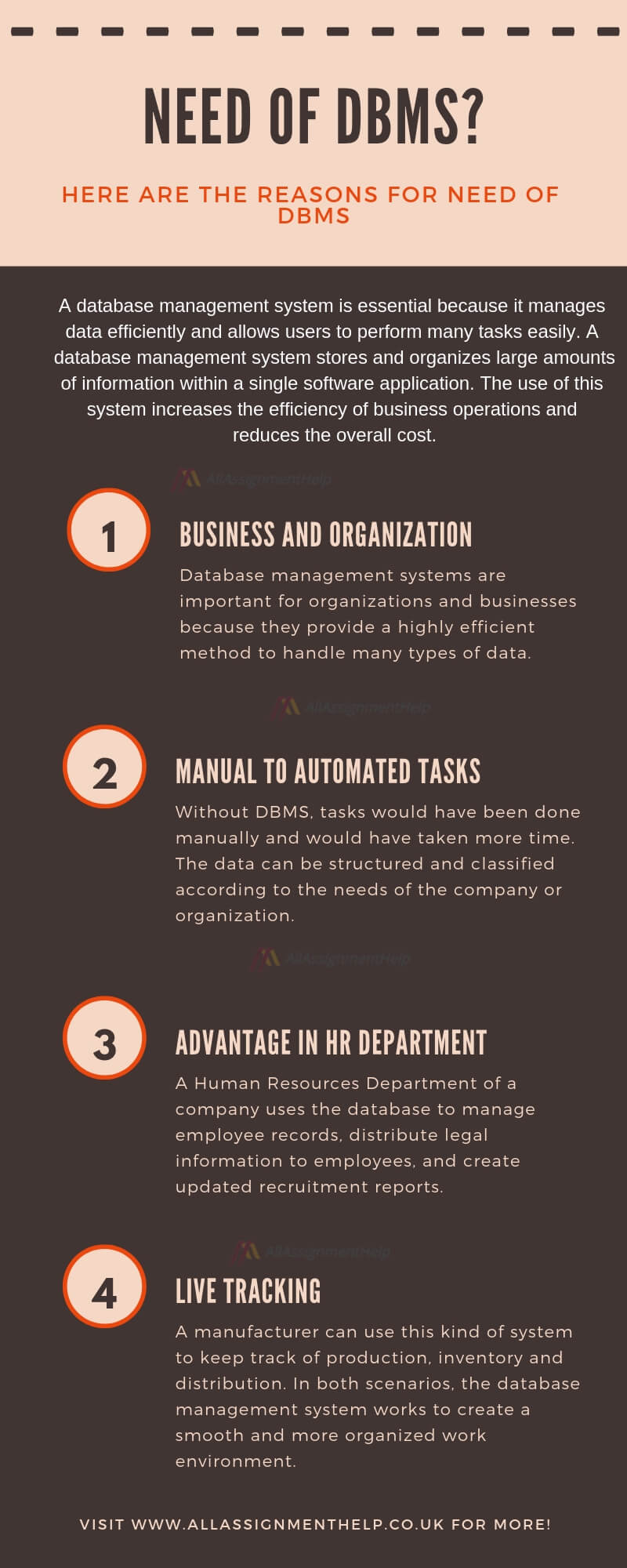What is a Database Management System?
Before starting to know about Database Management systems, it is important to know what is data. The data is nothing but statistics and facts stored on a system or free streaming, and generally it’s compressed and raw. When you visit any site, they can store IP addresses, that is, they can add a cookie to your program consequently, marking you that you visited the site, That’s the data, your name, this is the data, your age, this is the data.
When you process data, the information turns into a thing, it transforms it into something important. In light of the cookie data saved on the client’s browser, if a site can investigate that for the most part, 20-25 years of men meet more than us, at that point, this information is taken in form of data collection.
Database: It is the collection of data in an organized manner so that it can be easily accessed. Assignment Help is always there for you to guide you on academics topics.
Definition
A database management system is an expert software program that manipulates, enable and maintain clients to organize, store, access, retrieve, modify, secure and provide information integrity of the database.
Wikipedia (2011) characterizes the DBMS as a set of PC programs that control the maintenance, creation, and utilization of a database. This enables companies to control database development in the hands of administrators of the database (DBAs) and different specialists.
DBMS is a software package for the system that helps in the utilization of integrated archives and data records of documents known as databases. This permits distinctive client application projects to effortlessly get to a similar database.
DBMS can utilize any kind of database model, for example, a relational model or network model. In big systems, one permits DBMS users and other software to recover and store information organized. Rather than composing PC programs to extract information, the client can make basic questions in the inquiry language.
Along these lines, lots of DBMS packages give Fourth-Generation Programming Language (4GLs) and other application development highlights. It determines a consistent organization for a database and access and uses the information inside the database. It gives facilities to control data access, managing concurrency, implementing data integrity and recovering databases from backup.
A DBMS also gives the ability to display database information intelligently to clients.
Architecture of Database
The database design is a set of standards and techniques that will be saved in the database. This design describes the organization of all database objects. It affects performance, integrity, and dependability. Architecture characterizes the idea of the information, the structure of information and information stream.
RDBMS (RELATIONAL DATABASE MANAGEMENT SYSTEMS)
The current trend in DBMS is relational database management systems (R-DBMS). In R-DBMS the information stores as a table. We can find the use of this technology in different programming applications web-based business, medical records, and online banking transactions. The essential component in R-DBMS is that it is a solo database, it can spread in a few tables and every database has a single table. The entire database separates into a number of tables and all have a link between them.
Data Warehousing
A data warehouse is a non-volatile, subject-oriented, and time-series collection of data in a discussion of management. Data warehousing is storing information and molding information dependent on the subject rather than application. In the topic-oriented information collection, the primary object information for warehousing and giving the decision to the organization fundamentally focuses on the organization subject areas.
Integrated data warehouses are spread around servers, databases, and data tables, however, information must be coordinated into the qualities of factors and data definitions. In non-volatile, the data must not be updated once from the working system. Information warehousing has multi-dimension in their nature, so we can without much of a stretch discover information from the database, which diminishes the consumption of time.
Data Mining
Another component utilized in DBMS are information mining. This is the main objective analysis of information that already gathers such as membership applications, registration databases, for example, Data mining is a series of tools and process that examine the utilization of information to support the decision. Gather databases from an organization like membership or registration. In this way, we can without much of a difficulty arrange the information as tables through the database.
Database Application
Database applications find their place in loans, banking transactions, customer details, and banking for internet transactions. For the schedule information and reservation in airlines, for the information of students and course details, maintaining a record in telecommunication regarding customer care and monthly bills. Also in credit card transactions for recording and preparing bills.
Database Maintenance
Database Maintenance has a lot of functions, for example, integrity, control, analysis, replication, update and unload. The content in the database investigation shows information about clients. The control physically shuts the database to access the database. Integrity makes a backup document for the last transaction.
Advantages of a DBMS
Utilizing DBMS to manage and store information proves to be useful, however overhead as well. One of the greatest advantages of utilizing DBMS is that it enables clients and application software engineers to utilize and access comparative information while managing data integrity.
Information is better maintained and protected when it may be shared utilizing DBMS, rather than making new cycles of similar information stored in new records for each new application. DBMS facilitates access to central information by numerous clients in a controlled manner. Following are the advantages of DBMS:
- Data independence and abstraction.
- Security of Data
- Mechanism of locking for the concurrent access
- For balancing the need of various application utilizing similar data because of the efficient handler
- Ability to recover faster with errors and crash that includes recovery and restart
- Data integration ability that is robust
- Auditing and logging of activity
Another important use of DBMS is to execute a structured, logical organization of information. A DBMS helps in saving the economy of scale for a lot of information processing since is upgrades for this kind of activity.
A DBMS can similarly give numerous ideas to a single scheme of the database. A view used to define which information the client sees and how the client sees that information. DBMS gives a dimension of abstraction between the theoretical pattern, which characterizes the logical structure and physical schema of the database, which describes the indexes, files and other physical components utilized by the database.
Obviously, to provide these advantages a DBMS must do additional work, to carry an overhead with it. A DBMS will utilize more memory and CPU than a basic file storage system. Also, various types of DBMSes will require different kinds and level of system resources.
Components of DBMS
Software
DBMS is basically a software system that can be considered as management support or interface to communicate with and deal with the database. The interface additionally spreads in real-world physical systems that contribute information to backend databases. OS, hardware, and networking software are incorporated into managing, accessing, creating and handling databases.
Data
Operational information in DBMS, access to metadata and database records as a resource for processing the required functionality. Information may incorporate documents, for example, file documents, authoritative information and information word references used to speak to connections for information stream, possession, structure and different records or items.
Procedure
Procedures are the basically the instructions that are followed while using DBMS, this is not the integral part of DBMS.
Database Language
These are segments of DBMS that are utilized to modify, access, store and recover information from the database; Control user access; Specify the database schema and oversee other associated database management. Types of languages of DBMS include Database Access Language (DAL), Data Definition Language (DDL), Data Manipulation Language (DML) and Data Control Language (DCL).
Runtime Database Manager
An incorporated management segment of DBMS that handles runtime information related functionality, which is normally utilized for reference-based database access. This part checks for client approval for inquiry; Creates an ideal strategy for query execution; Process endorsed questions; Supports concurrency such a significant number of users can work on a similar database, and guarantees the uprightness of the information recorded in the database.
Question Processor
As a fundamental part of DBMS, Query Processor functions as intermediate among DBMS data engines and users to pass on query demands. At the point when clients enter a direction in SQL dialect, directions are executed from abnormal state dialect guidance to bring down dimension dialect, which can comprehend the hidden machine and process it to do the fitting DBMS usefulness. Notwithstanding parsing and deciphering guidelines, the inquiry processor likewise advances inquiries to guarantee quicker preparing and exact outcomes.
DBMS was intended to take care of fundamental issues related to the storing of data, securing, accessing, managing and auditing a form of a file or a document. Database applications that were traditional, were created at the top of the database, which prompted difficulties like data segregation, redundancy, difficulty managing data access and integrity constraints. At the logical and physical level, a layer of intangibility was required between applications, users and databases.
If you want more help on academics, assignment help UK is there for you.
How DBMS looks like?
- Few database management systems incorporate a graphical UI that enables you to maintain and create a database by “pointing and clicking”.
- Other database systems utilize a command line interface, which necessitates that you utilize some programming commands to maintain and create your database.
- Even though, most command line database systems similarly offer the option of introducing graphical administrator tools, which enable you to point and click “your way” through the majority of the tasks.
- Several systems appear to be unique, however, there are numerous regular features that you can utilize.
Roles of the Database Management System
The universe of data is always showing signs of change and each minute is developing. It has made another dimension of challenges and development for organizations around the globe. Recording data accurately, refreshing, and following them on a regular and efficient basis, organizations can solve their difficulties on one side and then again they can utilize the vast possibilities given by this area.
By gathering updated data every minute, organizations are utilizing the above information to accomplish their objectives efficiently, and on the opposite side to engage your business deliberately. A few exercises conducted after the data collection incorporate calculating sales estimates, creating accounting reports and making invoices of customers.
This data and its insights are then made accessible to the management and workers of the association through the digital database. One of the proven strategies that brands can oversee connections between various database components is using database management systems, which is a vital part of the working of organizations and associations around the globe today.
Database management systems are an important and critical link in form managing. They are essential management and running of data. It additionally helps organizations in transferring the data through the whole system. Here are some of the reasons, why DBMS is important:
It is required by an Organization for accessing and managing data
The advanced database management system is reliant on a programming language that is called SQL. This is utilized to update, access, and erase data that is available inside its table. There are additional programs in the database system that incorporate open source MySQL queries and Microsoft SQL Server that empower external projects to get to their data through queries of SQL. Let’s take an example, a site page can show information or data that incorporates data of product and photographs, descriptions, and costs. This information is effectively accessible to the client when the webserver programming is connected with the R-DBMS.
Conclusion
In the end, we can say that the DBMS system provides data abstraction, and it removes structural and data dependence from the system. Which in turn makes things very easy on the end-user. You can learn a lot more about databases with our online database assignment help available to all clients in the UK and the USA.


